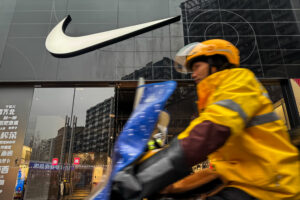
Last week, Tesla Inc (NASDAQ: TSLA) unveiled its long-awaited robotaxi, the star of its next chapter. The Cybercab was revealed at the massive Warner Bros Studios in Burbank, California, known as Hollywood. Like the Cybertruck, Tesla’s robotaxi has a futuristic design, but the “We, Robot” event failed to impress. After the event, Tesla CEO Elon Musk’s net worth went down by $15 billion as he holds about 13% of the company’s shares, but he remains the world’s richest person.
More Information About The Cybercab
With production scheduled for some time before 2027, Musk also revealed that the Cybercab, which would compete with rivals including Alphabet Inc (NASDAQ: GOOG)(NASDAQ: GOOGL)-owned Waymo, would cost less than $30,000, which is about the same price as its cheaper Model 3 and Model Y. Moreover, the Cybercab has no plug as it would use inductive charging, one for which Tesla does not currently have infrastructure for, raising many concerns about the cost of making this driverless dream actually happen.
However, Musk remains optimistic despite skepticism.
After a decade of failing to meet his own deadlines, Musk’s prediction that production of the Cybercab would begin some time “before 2027” is seen as questionable. Paul Miller from Research Forrester believes it will be extremely difficult for Tesla to offer a new vehicle at that price within that timeframe, which means Tesla would be making a loss on every vehicle.
The glitzy showcase failed to shake off the feeling that Tesla is losing the race.
Thursday was supposed to be the unveiling of Tesla’s new chapter, providing a glimpse of its future built on Musk’s latest driverless dreams. But with Musk’s, history of falling short on promises and Tesla’s past of safety issues, there are many concerns around the Cybercab. Adding to the fact that Alphabet is already operating with Waymo, along with other Chinese firms, Tesla is still far from disrupting the landscape. Many have faltered with automated driving technology when it came to figuring out a profitable business model. For example, it took Google quite some time to scale Waymo. On Thursday, humanoid Optimus robots served drinks and the world got a glimpse of Tesla’s robotaxi fleet, “Cybercab” and “Robovan”, with disappointment in the air. While reasons varied, from not-so-thrilling joyrides in the new vehicles to not-so-self-functioning self-functioning robots and so-on, Tesla failed to impress as it goes up against not only Google and its Waymo, but General Motors (NYSE: GM) and its Cruise autonomous ride-hailing service, as well as Zoox, Amazon.com Inc (NASDAQ: AMZN)’s self-driving subsidiary. All in all, the market was probably mostly disappointed because they the dazzling event failed not provide any concrete numbers.
DISCLAIMER: This content is for informational purposes only. It is not intended as investing advice.
This article is from an unpaid external contributor. It does not represent Benzinga’s reporting and has not been edited for content or accuracy.
Up Next: Transform your trading with Benzinga Edge’s one-of-a-kind market trade ideas and tools. Click now to access unique insights that can set you ahead in today’s competitive market.
Get the latest stock analysis from Benzinga?
This article Tesla Fails To Justify The Robotaxi Hype With Concrete Figures originally appeared on Benzinga.com
© 2024 Benzinga.com. Benzinga does not provide investment advice. All rights reserved.





